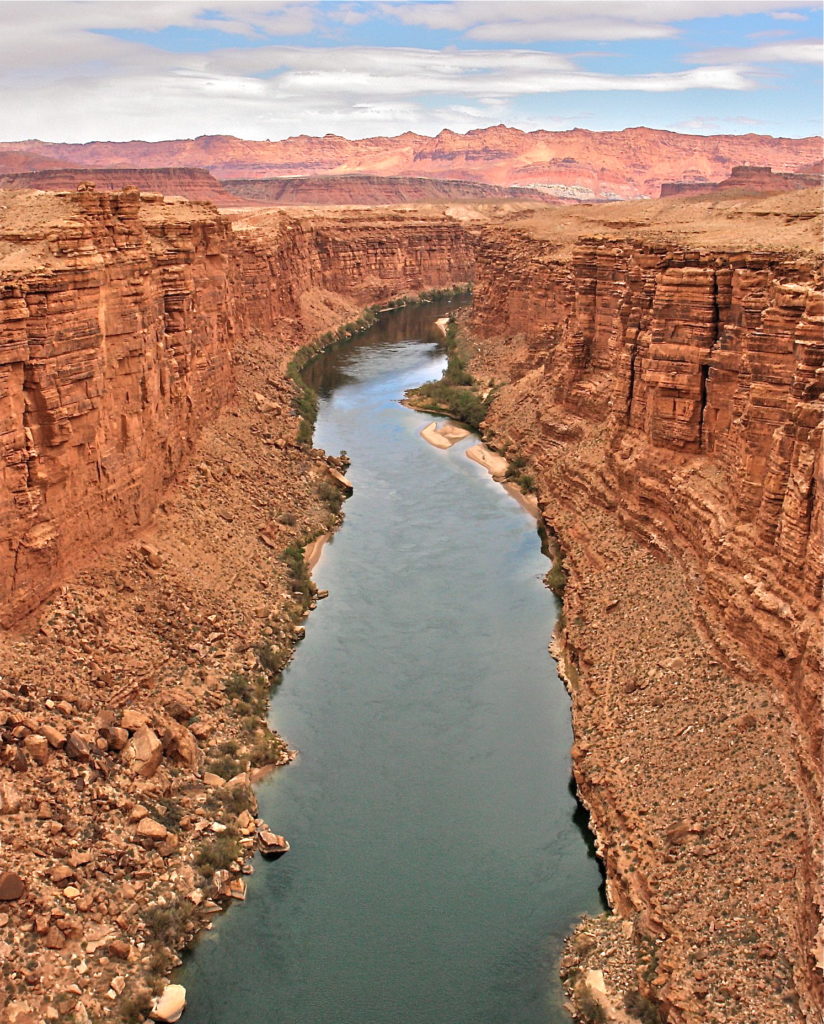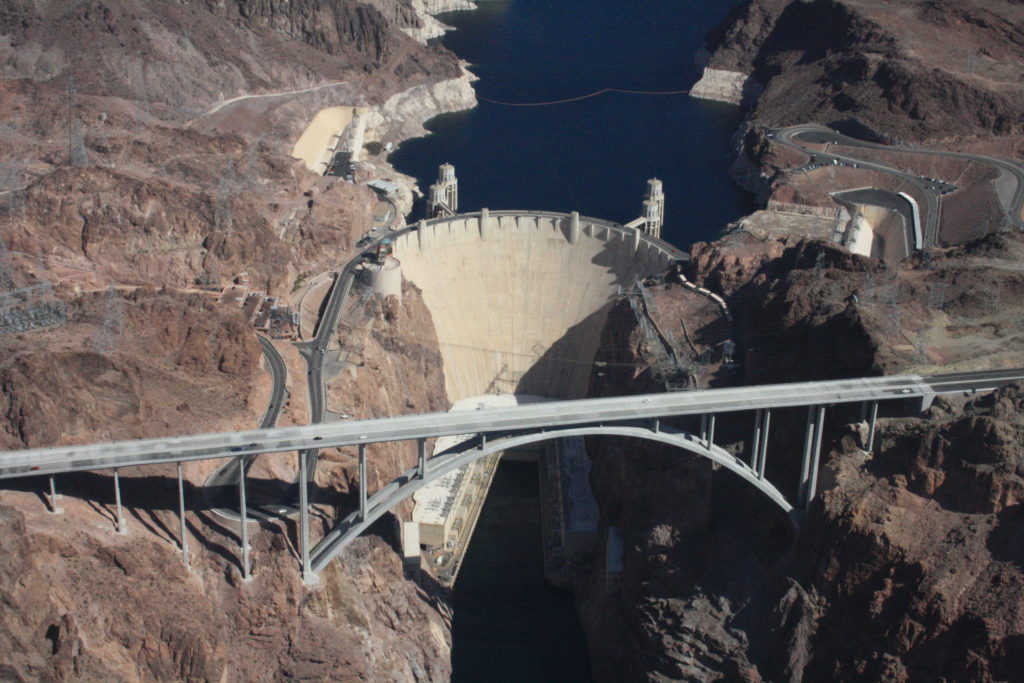
We’ve been gathering information on various threats to the Colorado River for more than five years now at Boulder Weekly. We’ve made trips to the desalination operations at the Paradise Valley Unit on Colorado’s Western Slope; visited the headwaters of the Green River in Wyoming; written a fair amount about the lack of Colorado River water that eventually makes it into Mexico’s Gulf of California despite international treaties guaranteeing its arrival; and reported on many of the current and proposed projects to divert still more water from the Colorado River Basin to the Front Range for no better reason than watering the lawns of new housing developments.
But this time around I want to speak to the latest effort “to save” the Colorado River via impact investing because I think it just may be the greatest threat yet to the continued health of the Colorado, the West’s most important waterway.
This threat is not one you’re likely to hear about from our state’s news media or in the glossy brochures of the well-heeled environmental groups who claim to be fighting for the health of this precious public resource. It seems when it comes to the Colorado River, impact investments have been made in more places than just water infrastructure projects. But I’ll talk more about that in a bit.
Simply put, the Colorado is in trouble because there isn’t enough water in it. And there isn’t enough water in it because too many industries and cities are taking too much water out of it. Not to mention climate change and the ongoing drought aren’t helping matters.
It isn’t rocket science.

Recent research tells us the flows in the Colorado River dropped 19 percent from 2000 to 2014 as compared to the 95 years that came before. The same researchers predict that by 2050, we will see another 20 percent drop and that number could go up depending on how hard the impacts of global warming hit the West. This is a big problem when you consider that the Colorado River supplies drinking water to more than 30 million Americans, according to a white paper on impact investing in the Colorado River Basin prepared by the Walton Family Foundation… yes, as in the Walmart Waltons.
For those unfamiliar with the term, “impact investing” is defined as investments made with the intention to generate measurable, beneficial social or environmental impact alongside a financial return.
So with that in mind, if we are really interested in saving the Colorado, there’s pretty much only one way to do it. We have to figure out ways to use our money, our technology and our regulations and laws to cause less water to be removed, thereby maintaining a healthy river that flows from the Rocky Mountains of Wyoming and Colorado all the way to Mexico’s Gulf of California.
Again, it’s a pretty simple concept; more water left in river, healthier river.
Don’t get me wrong. When I say it’s simple, I’m talking about understanding what needs to be done to actually save the river, which, after all, is the mantra of every environmental group, industry, billionaire, philanthropist and government entity that’s currently involved in discussions regarding the future of the Colorado. All these seemingly disparate groups keep saying their primary concern is saving the river. But unfortunately, there seems to be some confusion regarding the definition of the words “save the Colorado River.”
I know, it shouldn’t be that complicated, right? I hear those words and think they are referring to saving the Colorado River as in “a large natural stream of water flowing in a channel to the sea,” (as defined by Webster’s). But that’s not what they are saying at all. In fact, you could argue that they are saying pretty much the opposite.
If you listen closely when governments, industry and the funders of the current “save the Colorado” cause describe their mission, you realize they are actually referring to saving the growth potential of the communities and the economies and the industrial practices that exist, and profit byway of their diversion and consumption of the water they remove from the Colorado River.
Call me an optimist, but I’m pretty darn sure that everyone who just read that last sentence understands that “saving the Colorado” is not the same thing as “saving the potential economic growth that can be derived from the Colorado.” So why all the confusion? If you guessed “money,” give yourself a gold star.

Remember the movie The Big Short about the hedge fund guys who made hundreds of millions of dollars by buying credit default swaps against bonds based on subprime mortgages? Translation: The guys who bet that the housing bubble was going to burst in 2008 and were right. If you haven’t seen it, check it out, and pay close attention at the very end when the text goes up on the screen telling us what these real-life gazillionaires are up to these days. It’s really the most disturbing part of the film. Christian Bale’s character was based on the very real Michael Burry, the eccentric, savant-like hedge-fund manager who was the first to figure out the whole “big short” concept. The scrolling text regarding Burry tells us he is now investing his personal fortune into water in the Western United States. And he’s not alone.
I’ve written about impact investing in these pages for years, mostly in connection to how the billionaire funders of the establishment Democratic Party used their money to impact invest in natural gas and natural gas infrastructure.
All involved viewed it as a win-win. The billionaires would profit from their investment thanks to the political actions of the Democrats who are pushing the switch from coal to gas in electric power generation and making it possible to export more liquefied natural gas — a combination that will cause natural gas prices to rise. Billionaires, Democrats and the environment will all win, but…
Unfortunately, the science changed in 2010 and we now know that natural gas extraction is likely worse in terms of global warming than coal. It now looks like the first return on that investment will roll in just after the human race has kicked the bucket.
I only point this out to illustrate the dangers of allowing the 1 percent to impact invest in really important sectors like drinking water and natural gas, areas where millions or even billions of people can get screwed if the geniuses with the checkbook make the slightest miscalculation or possibly put their payday ahead of the public good. And I think that is exactly where we are when it comes to impact investing in water, primarily in the Colorado River.
While this new incarnation is again being framed as a win-win, I think the chances that it will hasten the destruction of the Colorado River and cause average Americans to pay far more for their access to water is very likely. Enter the Waltons.
The Walton Family Foundation has been showing up in all things water in Colorado and beyond for years now.
It is like a water version of the Congressional revolving door with the same players moving from different federal and state agencies to and from the Foundation to other water entities or even environmental organizations.
Trying to keep up with the Walton Family Foundation when it comes to water has given me whiplash. They constantly proclaim their commitment to saving the all-important Colorado River, yet they also seem to have their tentacles in every environmentally harmful diversion of Colorado River water you can find.
Their impact investing white paper, which encourages other wealthy entities to join them in pushing forward water infrastructure projects, is written in truly schizophrenic fashion.
It tries to sound like both a road map for preserving a healthy Colorado River while primarily putting forward a plan to harness every drop of the river’s water in order to ensure that cities can grow, economies can expand and heavy industries, including fracking and coal-fired power generation, can maintain and even increase the amount of water they use. They also support increased diversions of Colorado River basin water to the Front Range where it will be used for more unsustainable development.
Don’t believe me; here it is in the Foundation’s own words:
“At the Walton Family Foundation, we are working to find creative solutions — that benefit the environment and the economy — to ensure the Colorado River basin has the water supply it needs to sustain the West’s growing population.
“Each of the projects highlighted in the white paper can create jobs and enhance local communities, prevent hazardous situations from developing as a result of aging infrastructure, and underscore the importance of using water efficiently for the benefit of multiple purposes.”
Does that sound like they are trying to figure out how to leave more water in the river?
A perfect example of impact investing from the white paper is the Walton Family Foundation’s support for the Fontenelle Reservoir Riprap Project we wrote about this week on page 15.
Hiding behind the confusing curtain of water semantics, the Waltons, along with industrial water users and the State of Wyoming, make it sound like creating the ability to pull an additional 150,000 acre-feet of water out of the Colorado River basin will somehow improve the health and natural environment of the river. But what they don’t mention is that those 150,000 acre-feet can and will at some point be contracted for purchase by environmentally destructive industries such as oil and gas, energy generation via coal fired plants or chemical manufacturing. If the water is released downstream it will be consumed by some city that is continuing to grow in a dry place beyond its natural means. And if it makes it further it will eventually be used to water the desert for inefficient agricultural purposes.
Remember, the Colorado is threatened because too much water is already being taken from it. Creating a whole host of infrastructure projects — the Walton white paper is pushing 22 of them — designed to allow even more water to be removed from the Colorado, albeit more efficiently, for the purpose of ensuring future population and economic growth is in no way the same thing as saving the Colorado River. Damming and diverting and desalinating the river to ensure that its water can be used for irrigation and fracking and other heavy industry is committing environmental homicide on the Colorado. And never forget that the Waltons and their pals are impact investing, not impact giving to charity. They expect a return on their money at some point, and I suspect that translates to higher-priced water for 30 to 40 million people at some point.
One of the proposed projects the Waltons are pushing is The Colorado Salinity Control Project, which is ironic.
You could say that most of the problems threatening the Colorado River today exist because of the government’s salinity control projects that were begun in 1974. The Colorado is naturally quite salty. It’s fed by groundwater that cuts along or through shale formations that were once the bottom of inland saltwater seas. As a result, the natural groundwater flowing into the river in many places is saltier than the oceans. This saltiness should have saved the Colorado because using it for irrigation on crops over time would eventually have rendered the land incapable of growing most profitable things. The salt was like God’s natural protection against overuse.
No irrigation would have meant far more water being left in the river. But instead, the federal government, now with the support of impact investors, sucks up salty groundwater and prevents it from making its way into the river. This means less water going into the river and billions of gallons of additional water being removed for irrigation purposes. And it’s all because someone made the decision to alter the natural state of the river’s environment. Every infrastructure project we add to the Colorado causes the potential for unforeseen chain reaction, in one form or another.

So why aren’t you reading about the Waltons and all their influence over our water in the West? I think the answer is that the Waltons are smarter than those who came before them. They have taken the art of impact investing to new and more dangerous heights.
Let’s start with the environmental groups actively working on preserving the health of the Colorado River. Why aren’t they sounding alarms about preserving the actual river rather than silently watching as the Waltons work tirelessly to preserve the economic growth the river can provide if managed for that purpose? Could it be that the Walton Family Foundation is pouring tens of millions of dollars into the nine largest environmental organizations supposedly fighting to save the Colorado? In 2016 alone, the Foundation gave American Rivers, The Nature Conservancy, Trout Unlimited, Conservation Colorado, American Whitewater, Environmental Defense Fund, Audubon Society, Western Resource Advocates and Colorado Water Trust a combined $24,765,848.
And yes, in my experience with environmental organizations, that last figure would make it very hard to be critical of the Walton Family Foundation’s efforts to dam, divert and otherwise redistribute Colorado River basin water for the purpose of supporting irresponsible population and economic growth well into the future. Environmental organizations are infamous for not biting the hand that feeds them.
Thank goodness we can count on the media to play watchdog on this whole mess… I wish.
You may have noticed that there has been a bit of an increase of late when it comes to water reporting. Much of this uptick comes compliments of radio outlet KUNC, which syndicates its water reporting to other public radio stations. Aspen Journalism is also reporting on water and making its work available to a variety of newspapers. Other respected outlets like ProPublica, High Country News and the Society for Environmental Journalism are now keeping an eye on the Colorado River. Yet none of them, that I can find anyway, have reported on the potential threat posed by the Walton’s incredible influence over the future of the Colorado River. In fact, they seem to be cheerleading some of the Walton’s efforts, such as providing funds to buy water rights from farmers in order to leave that water in the river, but they fail to report what then happens to that water. Does it flow to the sea, creating a healthy river, or is it simply moved downstream into a “bank” — the name water impact investors use for dammed reservoirs — in order to support population and economic growth or industrial usage somewhere else downstream? The answer is the latter but I sure haven’t read that in the newspapers I read, or heard it coming out of my radio. And you guessed it, these news outlets, like their environmental organization counterparts, are also on the receiving end of grant money from the Waltons to do water reporting. As the old saying goes, “no one has to tell a good reporter where not to look,” and they sure aren’t looking critically into the Waltons.
(Side note: As news media scramble to find new models to fund themselves, let’s all agree now that we shouldn’t allow the Waltons to fund our water reporting or oil and gas companies to fund our energy reporting or big developers to fund our analysis on growth or Democratic or Republican billionaire campaign donors to fund our political reporting. I think such hypocrisy is far more problematic than just going out of business. But I digress.)
And just in case you’re holding out hope that the academic world will come to our rescue, I’m thinking most of you already can guess who’s funding the academic research into water issues concerning the Colorado River. Yep, it starts with a W. The Waltons have funded research pertaining to water at Colorado State, CU Boulder’s Law School, Stanford, UC Santa Barbara and more institutions.
Like I said, the Waltons and their pals are impact investing in our water and they are a lot smarter than those who came before them. They understood from the beginning that there were only four possible areas of oversight into their water activities: government, journalists, environmental groups and academics. And they have poured millions of dollars into all of these areas. As you have seen, or rather not seen, the Waltons’ efforts to influence or even control how water is distributed and used in the future has largely been kept invisible or even cheered on.
Brilliant to be sure… but very, very dangerous.
`














